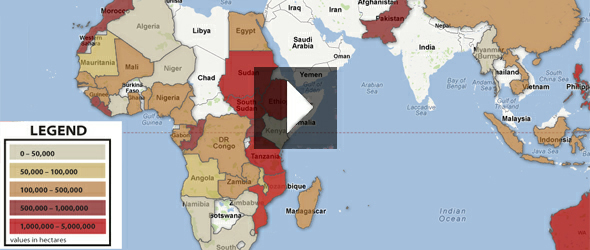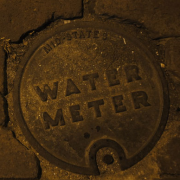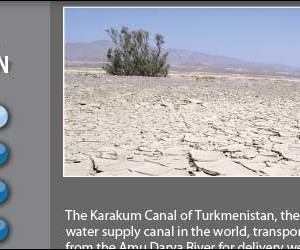Ned Breslin: Counted Like Sheep — Retooling the WASH Model’s “Beneficiary” Indicators (Part I)
I hate the word “beneficiary.”
Beneficiary is a misleading indicator and driver of development assistance. It implies passivity on the part of the “recipient” that does not mesh with my experience overseas, where people are indeed active agents of their own development, not simply recipients of donor benevolence.
Many organizations understand this and have implemented programs and projects with considerable up-front financing and sweat labor from community members. In good programs, communities are heavily involved in the planning and execution process—they are hardly passive beneficiaries and do not deserve to be counted like sheep.
Yet people are still counted like sheep. Beneficiaries remain the only common measurement in the current model of the international water, sanitation, and hygiene (WASH) sector. NGOs (and others) take donor funds and support the installation of a new water point or a latrine. Then they figure out how many people benefited from the project and publish the results in annual reports that are emailed to donors and supporters, and, more recently, are posted on Twitter and Facebook in hopes of garnering even more support.
Read any annual report, and the number of people helped last year—the number of beneficiaries—is often the key data point on which the organization wishes to be judged. Strategic planning generally follows a similar pattern—more countries and bigger budgets lead to more beneficiaries.
The underlying message: good organizations help more people each year—showing scale, growth, and impact. Success is, in the end, measured by simply tallying up the number of beneficiaries served in a given year. Kind of like the McDonald’s of the development sector.
It’s true that the number of beneficiaries may show what happened in a given year, but it does not, in any way, prove whether the intervention was long lasting or transformative for the community.

The focus on annual beneficiary numbers emphasizes short-term results—it’s all about what you did this year—and has had significant and detrimental implications for the NGO community, let alone the communities we were supposed to have been helping.
Cost-Beneficiary Analysis
I worked for an organization that broke down beneficiaries by country, counting “success” only if a country contributed at least 50,000 beneficiaries toward the organization’s global targets. It had nothing to do with the quality of the work, just with the numbers. And this outlook trickles down—talk to field staff from organizations driven by this culture, and they will convey anxiety that they may not meet “this year’s numbers,” analyzing what this could mean for their program.
Since organizations often try to show how effective they are on a cost-per-beneficiary basis, financing and funding decisions can be influenced by beneficiary counts. And since the focus on beneficiaries rewards quick work, rather than more thoughtful interventions, and since “success” traditionally means more beneficiaries at less cost, organizations may choose to finance projects that are cheaper for the donor—dig a well instead of drilling a borehole, when the later is really called for; support one community over another because the costs are cheaper; implement projects that are closer to the road, avoiding the hard-to-reach and expensive communities. This way of thinking can snowball to altogether avoiding the more expensive countries, where the challenges are real but the population densities are low, the costs are high, and the investments may undermine cost-to-beneficiary ratios that are a sad part of fundraising and marketing efforts.
But who would know, and who would question programmatic impact or funding decisions, as long as our beneficiary numbers continued to grow?
Organizations trip all over themselves when trying to figure out the cost per beneficiary—$25 saves a life, or is the magic number $20? According to a documentary film I saw recently, the cost is only $6 per person, and this nominal fee covers that individual “for a lifetime.”
The focus on beneficiaries masks the real costs in the water and sanitation development sector, concentrating on the implementation of hardware and a bit of software—generally over a very short implementation period.
But the true cost of providing water and sanitation services sustainably is relatively unknown. With some degree of accuracy, we can say how much an initial intervention would be, but the true cost of ensuring water flows and toilets are used for decades is much higher than expected and certainly far more costly than what is spun through sloppy fundraising campaigns. The IRC International Water and Sanitation Centre’s WASHCost initiative is now publishing very important work on these kinds of lifecycle costs—and they most definitely are not $20 per person.
The Long Haul
None of this is meant to diminish the work by NGOs in the WASH sector. Make no mistake; the day that a little girl drinks her first glass of clean water is magical. It is a milestone, and one that rightly brings tears of joy to the eyes of many people all around the world. By all means, we should celebrate that great day.
But we must also understand that development is complex, and that, although the first day water flows may be the end of the job for (some) organizations, it is merely the beginning of a very long and difficult journey for those beneficiaries who were just counted by the organization and reported out to the world.
We must acknowledge this reality and shift away from annual beneficiaries as the golden indicator of success. A more comprehensive model asks the really important questions—does this little girl continue to have water long after she was “counted” and the cameras have gone? Does water continue to flow in her community long enough for her to grow up, never having to return to that polluted scoop hole that kept her out of school as a child? And, one day in the distant future, do her children scratch their heads in utter confusion when she tries to explain how she once collected water from a muddy hole instead of attending school?
Let’s be really honest—hard questions on long-term impact, investment decisions, as well as the true costs associated with providing lasting services will always be elusive if organizations can simply hide behind traditional beneficiary counts that utterly mask reality, contribute to poor programming, and distort actual field results. If we are to truly help eradicate water and sanitation poverty worldwide, we need to abandon beneficiaries as indicators of success and instead employ alternatives.
I will explore a few in the coming months.
Ned Breslin
Follow Ned Breslin on Twitter.
This is the first in a multi-part series in which Ned Breslin discusses NGO success indicator models and their alternatives.












I know you are working hard bringing this to the forefront. I welcome that day when there are some guidelines for reporting on the long range impact of projects, and way for organizations to sign a “Covenant” in regards to such. How does one expedite this? Will fundraising arms of organizations covertly block this initiative?
Dear Mr. Breslin,
I found your piece on beneficiaries very interesting, as I am in the process of writing a grant proposal that is requesting that number. I had not been thinking of it those terms myself prior to the proposal. I am working on an eco-san project in rural Haiti with the goal of 100% open-defecation free zones. Hopefully with a small epidemiological study we can demonstrate a decrease in disease and childhood death. How long will it take? and what period of time is necessary to make a valid study?
I’d love to continue this conversation off list. Feel free to write me.
and thanks for your work!
Gigi Pomerantz
Thanks for your efforts to bring more attention to this issue. In my three years at WaterAid the influence of fundraisers and marketers had over strategic and project choices was very frustrating, with “beneficiary” numbers the most obvious example. It discourages innovation and is an incentive for taking the easy option, which you explain very clearly. But I think you’re missing a couple of other effects of the “beneficiary” blinkers.
First, it risks undermining long term fundraising to present such an artificially simple story to potential donors. How long can INGOs carry on claiming in their marketing materials that development is easy and cheap before donating publics lose faith? Dishonesty breeds distrust.
And second, by bringing everything back to new hardware, it hides the real reason why millions of people lack access to clean and safe water – politics. The reason people don’t have water is often little to do with pumps and pipes, but because somebody somewhere decided that government money should be spent on something else or on somebody else. Spending money trying to influence those political choices adds nothing to a “beneficiary” count, but can have a far bigger impact that investing in a new borehole.
I look forward to the next post in this series – when it comes. Ned, will you be discussing how Water For People measures success? And could you comment on Engineers Without Borders’ efforts in Ghana?
Thanks for this great discussion.
Dear Mr. Ned,
I also agree with you that the people’s development is first and foremost theirs than it is someone else’s. In most under-developed countries, people think that it is a responsibility of someone from outside for them to have water. My understanding is that they have to lead every development project they want to implement and then seek support if they cannot do it alone.
Dear Mr. Ned,
I also agree with you that the people’s development is first and foremost theirs than it is someone else’s. In most under-developed countries, people think that it a responsibility of someone from outside for them to have water. My understanding is that they have to lead every development project they want to implement and then seek support if they cannot do it alone.
Christian